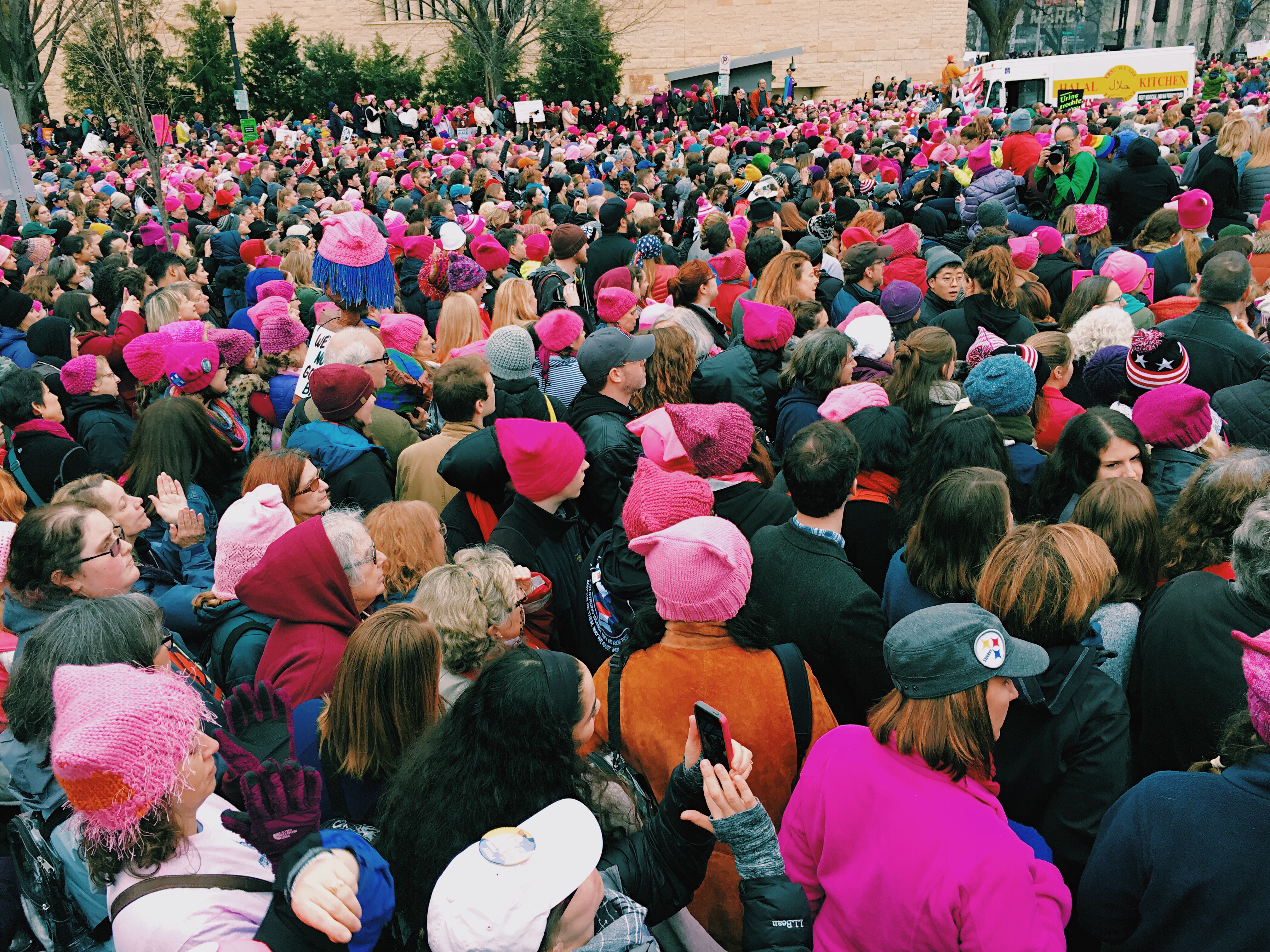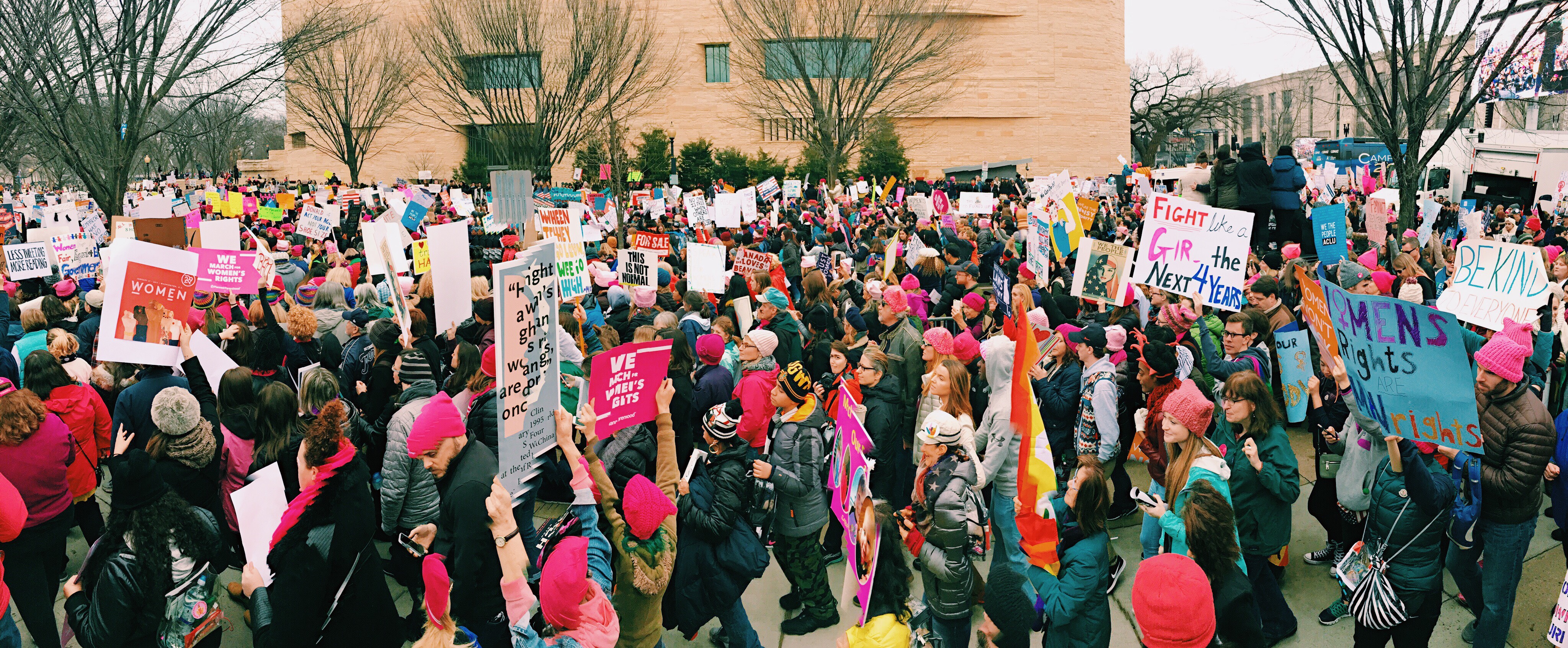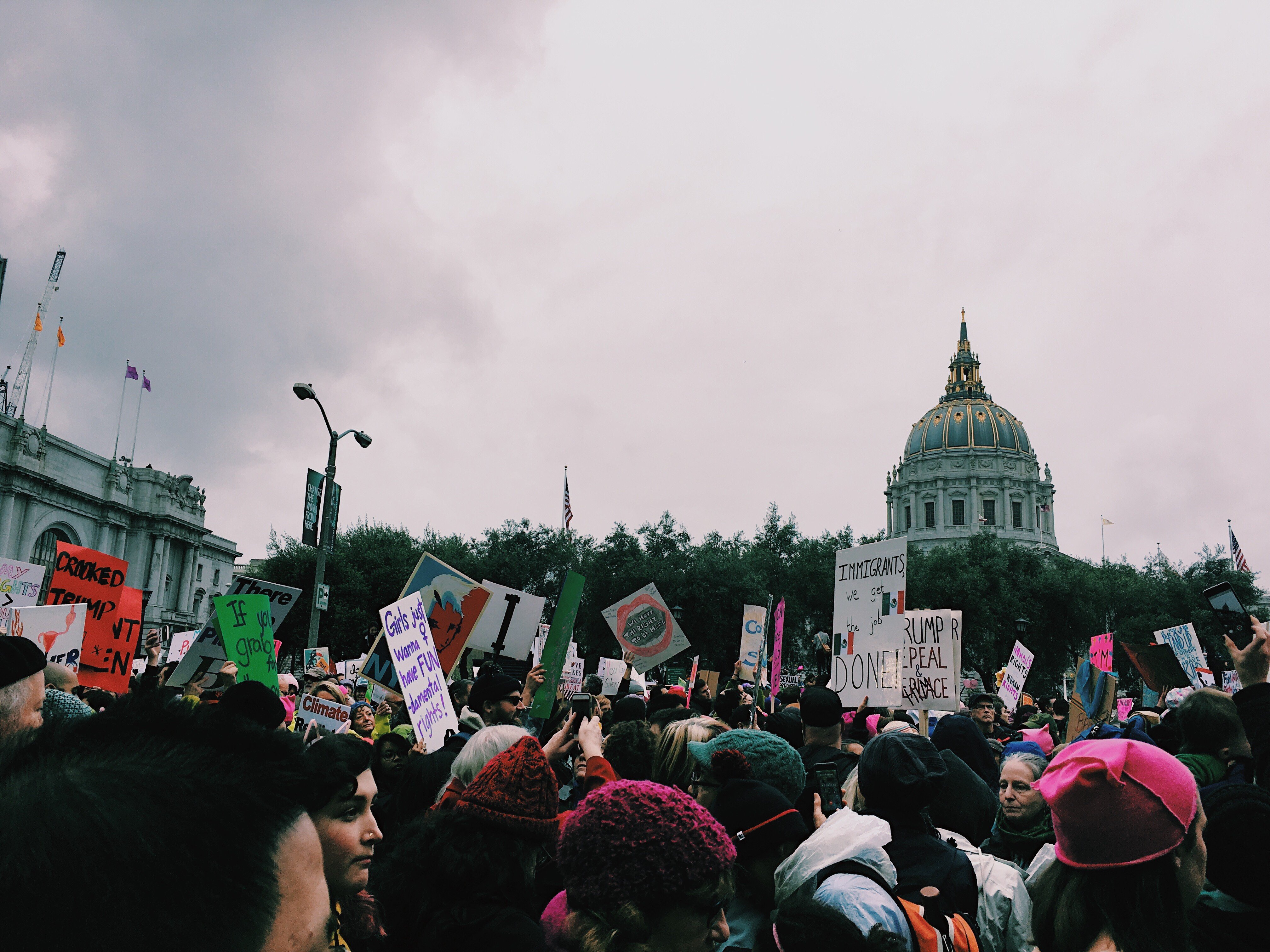
On November 8, discouraged and upset by the outcome of the US election, retired lawyer Theresa Shook set up a Facebook event inviting women to stage a peaceful protest in Washington, the day after the Presidential inauguration. The Hawaiian resident wanted the Trump Administration to know on its first day in office that women’s rights are human rights. By the time she woke up on November 9, over 10,000 people had expressed their desire to attend the rally.
Soon after, women across the country began setting up similar events. On November 10, New York-based fashion designer, Bob Bland decided to consolidate the various Facebook rally calls including Shook’s, and enlisted three activists to help coordinate a single event. Originally billed “Million Women March,” the name was later changed to “Women’s March on Washington” in a nod to the rally led by Martin Luther King Jr. on August 28, 1963. Bland and her team also used the social media site, to recruit volunteers from different states and cities to organize sister marches. Their efforts paid off handsomely.

On January 21, a day after President Trump’s inauguration, over 500,000 people, including many celebrities, arrived at the nation’s capital to stage a peaceful, but forceful, protest. An additional 408 marches took place in cities across the United States and 168 more in 81 countries worldwide. According to some estimates, over 4.8 million women, men, and children took to the streets on Saturday. They wanted to remind President Trump not just about women's rights but also a host of other issues like immigration and health care reform; protection of the natural environment, LGBTQ rights; racial justice, freedom of religion, and workers' rights.
Though thrilled at the turnout, Bland realizes that one rally is not enough to convince the new US Administration about the public’s concerns. Given that the first 100 days is the most important for establishing new policies, the activist has launched a new campaign. Entitled “10 Actions for the first 100 Days,” it starts by urging US residents to inform their local senator about the issue most important to them within the next ten days.

Concerned citizens can either write their letter on the postcard from the womensmarch.com website or create their own. To ensure their concerns are heard, Bland wants everyone to share their message on social media using #WhyIMarch tag before sending it to their respective lawmakers. After the ten days are over, the activist will assign the second, yet to be disclosed, task. Hopefully, repeatedly hearing about issues most dear and near to the hearts of Americans will encourage members of the Trump Administration to make the right decisions.
Resources: Washingtonpost.com, LA times.com. womensmarch.com.